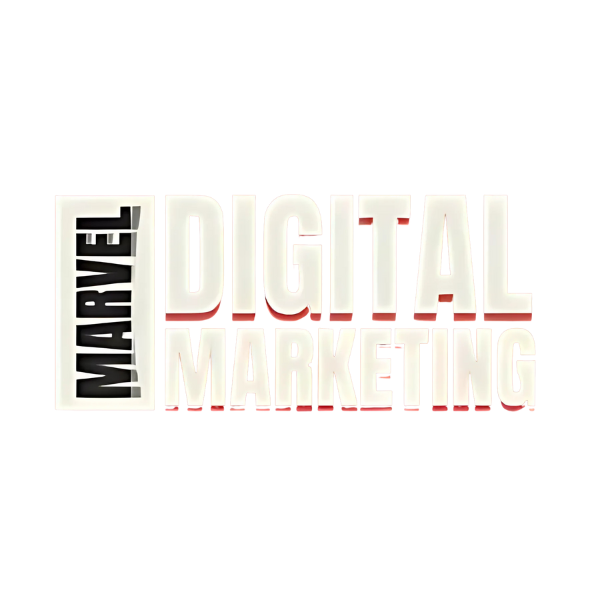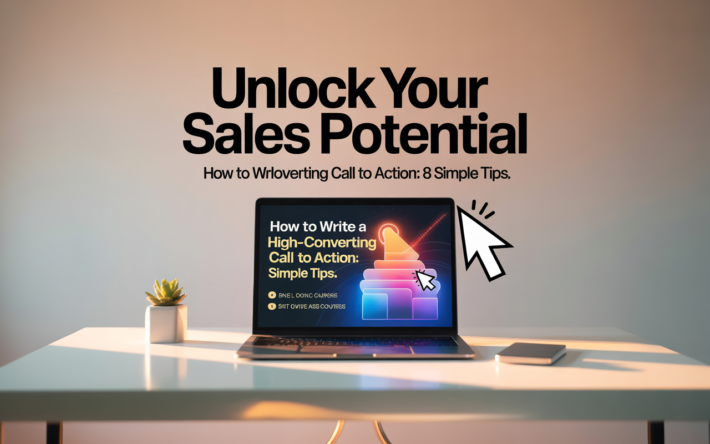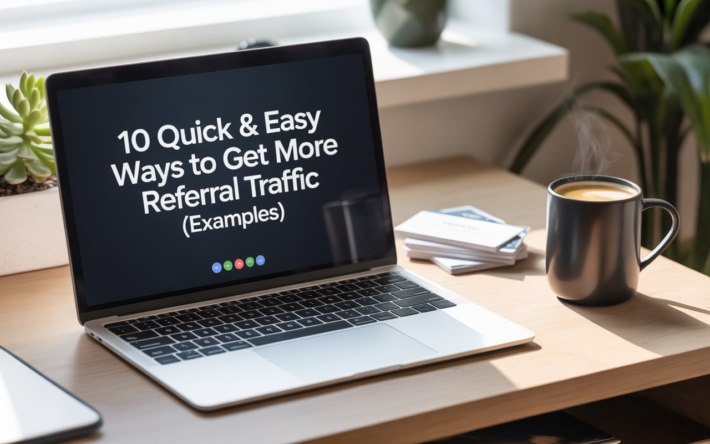Marketing Funnel: 5 Stages, Proven Strategies & How It Works
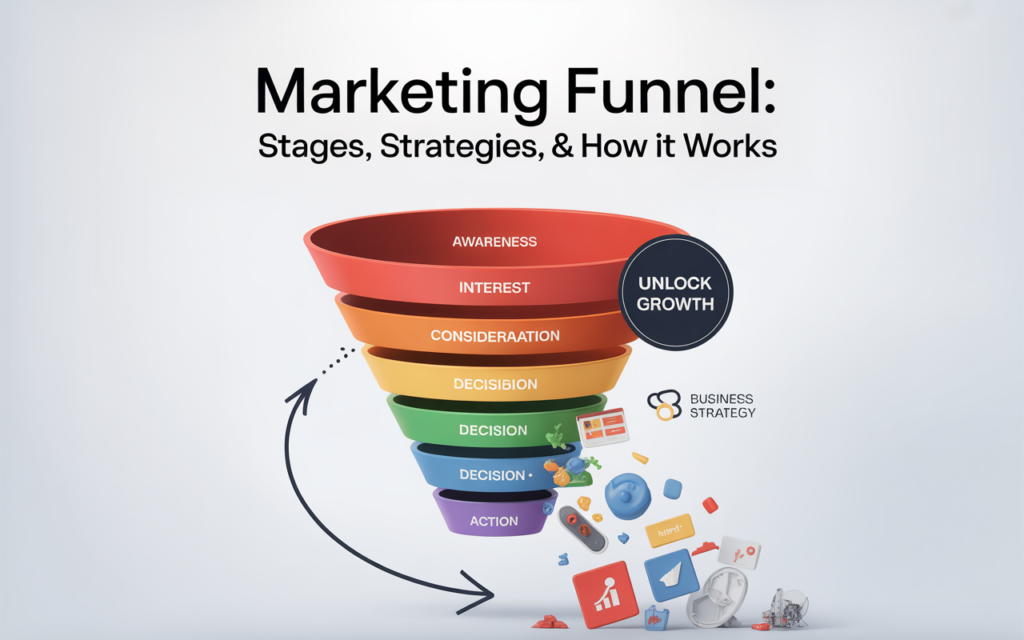
In today’s fast-paced digital world, simply having a great product isn’t enough. Businesses need a clear strategy to guide potential customers from the moment they hear about a brand to the point they make a purchase. This is where the marketing funnel comes in—a powerful model that illustrates the customer journey in clear stages.
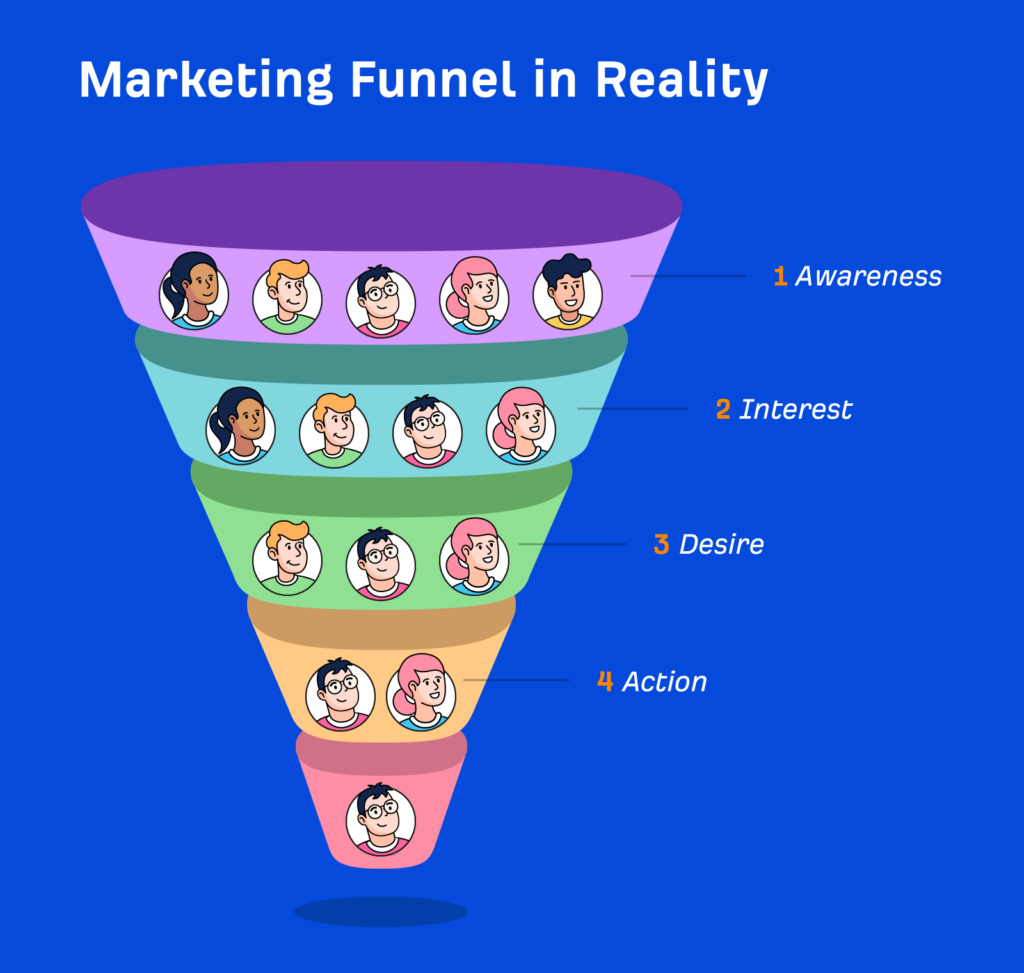
A marketing funnel helps businesses understand how prospects interact with their brand, starting from awareness, moving through interest and consideration, and finally converting into loyal customers.
According to HubSpot, companies that actively manage their marketing funnel see a 451% increase in qualified leads. This shows just how critical it is to optimize each stage of the funnel.
For example, a small online retailer might use targeted social media ads to raise awareness at the top of the marketing funnel, followed by personalized email campaigns to nurture interested leads further down. By tailoring strategies at each stage, businesses can improve engagement, reduce drop-offs, and boost sales.
Understanding the marketing funnel empowers marketers to connect with customers in a more meaningful way, delivering the right message at the right time. This not only improves the customer experience but also drives measurable business growth.
Read More: How to Generate Leads on LinkedIn: 6 Expert Tips & Strategies
What Is a Marketing Funnel?
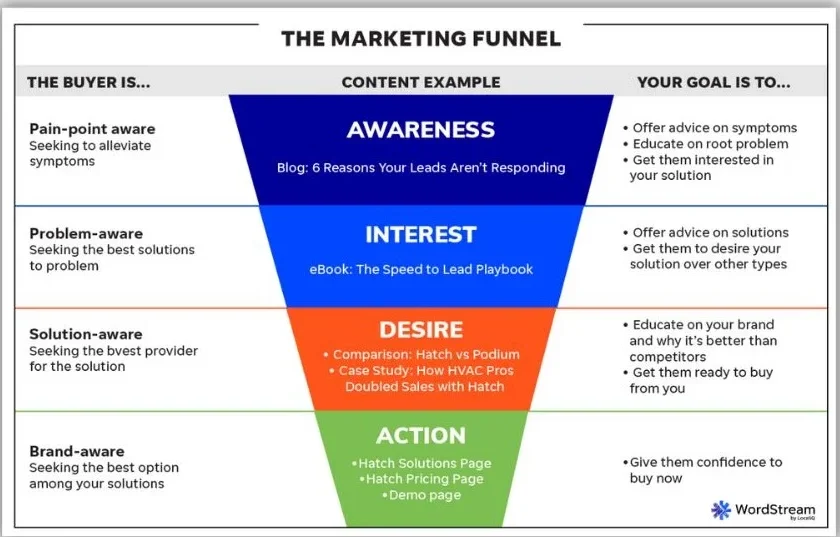
A marketing funnel is a visual representation of the customer journey, designed to show how potential customers interact with a brand from the first point of contact all the way to making a purchase.
Imagine it like a real funnel—wide at the top where many people become aware of your brand, and gradually narrowing as only the most interested prospects move toward conversion.
This customer journey funnel typically consists of several key stages: Awareness, Interest, Consideration, Intent, Evaluation, and Purchase. At the top of the funnel, marketers focus on generating broad awareness through channels like social media ads, blog posts, or influencer partnerships.
As prospects move further down the funnel, strategies become more personalized, such as targeted email campaigns or product demos.
Statistically, only about 2% of website visitors convert into customers on the first visit. This highlights the importance of nurturing leads through each stage of the marketing funnel to maximize conversion rates.
For example, a SaaS company might use free trials at the evaluation stage to encourage deeper engagement and help potential customers experience the value of their product before making a purchase decision.
By understanding how the customer journey funnel works, businesses can identify where prospects drop off and optimize each stage to better meet customer needs, ultimately increasing revenue and building long-term relationships.
Read More: Keyword Trends 2025: 10 Things You Need to Know
The Stages of the Marketing Funnel
Awareness
At the very top of the Marketing Funnel, the primary goal is to create awareness about your brand, product, or service. This is where potential customers first come into contact with your business, often without knowing much about you. It’s all about grabbing attention and making a strong first impression.
Key Channels for Building Awareness:
- SEO (Search Engine Optimization): By optimizing your website and blog content for search engines, you increase the chance that potential customers will find you when they search for relevant topics.
- Social Media: Platforms like Instagram, Facebook, LinkedIn, and Twitter help share your brand story and engage with a broad audience.
- Advertising (Google Ads, Facebook Ads): Paid ads help you target the right audience based on their interests and behavior, boosting visibility fast.
- Word-of-Mouth (WOM): Happy customers talking about your product to friends or sharing reviews online are incredibly powerful.
- Blogs: Creating useful and informative blog posts helps educate your audience and positions your brand as an authority.
Example in Action:
Imagine a consumer searching for “best running shoes” because they want to improve their fitness routine. They might stumble upon your blog post comparing top running shoes or an ad you placed through Google Ads. This interaction brings them into the Marketing Funnel at the awareness stage, where they first hear about your brand.
Important Fact:
Did you know that 81% of people conduct online research before making a purchase (Retailing Today)? This shows how important it is to have strong content and visibility at this early stage of the Marketing Funnel. If your brand isn’t showing up, chances are your competitors will.
By focusing efforts on the awareness stage, businesses build a strong foundation for guiding potential customers deeper into the Marketing Funnel, increasing the chances of turning them into loyal customers.
Interest
After becoming aware of your brand, potential customers enter the next stage of the Marketing Funnel — the Interest stage. Here, they start to engage with your content and explore your products or services more deeply. This is where curiosity turns into active engagement.
Key Channels to Nurture Interest:
- Website Visits: A well-designed website with clear information about your products, services, and value proposition helps keep interested visitors engaged.
- Social Media Engagement: When users follow your brand on platforms like Instagram, LinkedIn, or Facebook, they are signaling interest. Sharing informative posts, product updates, and interactive content keeps them connected.
- Email Marketing: Sending useful, relevant emails helps keep your audience engaged by delivering value directly to their inbox.
Example in Action:
A user who initially found your brand through an online ad might start following your Instagram page after seeing engaging posts about your latest product launch. This simple action moves them further along the Marketing Funnel, showing that they want to know more about what you offer.
Important Stat:
Email marketing delivers an average ROI of $42 for every $1 spent (Litmus). This powerful statistic highlights how effective targeted, valuable communication can be at building deeper interest in your audience during the Marketing Funnel process.
Focusing on engagement in the Interest stage helps transform casual awareness into genuine curiosity. By providing useful content, answering questions, and maintaining regular contact, you create opportunities to guide interested customers toward making a decision.
Desire
At the Desire stage of the Marketing Funnel, potential customers move beyond interest and begin to emotionally connect with your product or service. They start to see its real value and how it can solve their specific problems. This stage is crucial because it turns casual curiosity into a strong intent to purchase.
Key Channels for Building Desire:
- Product Demonstrations: Showing your product in action, whether through video demos or live presentations, helps customers visualize its benefits.
- Customer Testimonials: Sharing authentic stories from satisfied customers builds trust and makes your offering more relatable.
- Free Trials or Samples: Allowing prospects to try your product firsthand helps them experience its value directly, increasing their desire to buy.
Example in Action:
A software company offers a 14-day free trial of its project management tool. A potential customer signs up, explores the features, and realizes how it could streamline their team’s workflow. Experiencing the product firsthand strengthens their desire and moves them further along the Marketing Funnel.
Important Fact:
Companies that provide interactive product experiences see higher engagement, with studies showing that prospects who experience a product are 65% more likely to purchase. Fostering desire at this stage of the Marketing Funnel can significantly increase conversion potential.
By focusing on demonstrating value and building emotional connections, businesses can turn interested prospects into motivated buyers ready to take action.
Action
At the Action stage of the Marketing Funnel, prospects are ready to make a purchase or commit to a service. This is the decisive point where all the nurturing efforts from previous stages convert into real results.
Key Channels for Encouraging Action:
- Clear Calls-to-Action (CTAs): Direct, compelling CTAs guide customers toward completing the purchase.
- Limited-Time Offers: Discounts or time-sensitive deals create urgency and encourage prospects to act quickly.
- Easy Checkout Process: Simplifying the buying experience, whether online or in-store, reduces friction and prevents cart abandonment.
Example in Action:
An online shopper interested in a high-end blender clicks a “Buy Now – 20% Off Today” button on your website.
Thanks to a smooth checkout process and clear instructions, they complete the purchase without hesitation, successfully moving through the Marketing Funnel to become a paying customer.
Important Fact:
Research shows that simplifying the checkout process can increase conversions by up to 35%. Ensuring a seamless purchase experience is critical at the Action stage of the Marketing Funnel, as even minor friction can cause potential buyers to abandon their purchase.
By optimizing CTAs, offers, and checkout processes, businesses can effectively convert interested prospects into satisfied customers, completing their journey through the Marketing Funnel
Read More: How Much Does It Cost To Advertise On Reddit 2025?
Strategies for Each Stage of the Marketing Funnel
Awareness Stage
At the top of the marketing funnel, the goal is to capture as many potential customers as possible by educating and informing them about your brand and industry. At this stage, people are not yet looking to buy—they’re simply trying to learn more.
Strategy:
Focus on broad content such as blog articles, infographics, industry reports, and social media posts that answer general questions or provide useful insights.
For example, a digital marketing agency might publish a blog post titled “Top 10 Social Media Trends in 2025” to attract wide interest.
This type of content introduces your brand into the minds of prospects and helps fill the top of the marketing funnel with qualified leads who are curious to learn more.
Interest Stage
Once prospects are aware of your brand, they enter the interest stage of the marketing funnel, where they begin engaging with your content in a deeper way. They’re starting to evaluate if your solution addresses their specific needs.
Strategy:
Provide more detailed content that speaks directly to their pain points. This can include webinars, detailed guides, and case studies. For example, an IT solutions provider might offer a webinar on “How to Reduce Downtime in Small Businesses,” helping prospects understand how their service solves a real problem.
By addressing specific concerns, you build trust and keep leads engaged, steadily moving them further into the marketing funnel.
Desire Stage
At this point in the marketing funnel, prospects start developing a desire for your product by recognizing its unique value.
Strategy:
Highlight the key benefits and unique selling points through product demonstrations, customer testimonials, and comparison guides.
For instance, a SaaS company could showcase a video demo that explains how its software simplifies project management, backed by customer reviews that emphasize time savings.
This strategy turns general interest into a strong desire, encouraging prospects to imagine your solution as the answer to their problems.
Action Stage
The final stage of the marketing funnel is where prospects make their purchase or take another meaningful action like signing up for a service.
Strategy:
Make the purchasing process as seamless and straightforward as possible. Use clear call-to-action (CTA) buttons, offer limited-time discounts, and optimize your checkout page for simplicity. For example, an e-commerce store might offer “Free Shipping on Orders Over $50” with a big, easy-to-click button that says “Buy Now.”
A smooth and intuitive buying experience ensures that interested prospects don’t abandon the marketing funnel at the critical final step.
By applying these strategies thoughtfully at each stage of the marketing funnel, businesses can better guide prospects toward becoming satisfied customers, increasing conversions and fostering lasting relationships.
How the Marketing Funnel Works
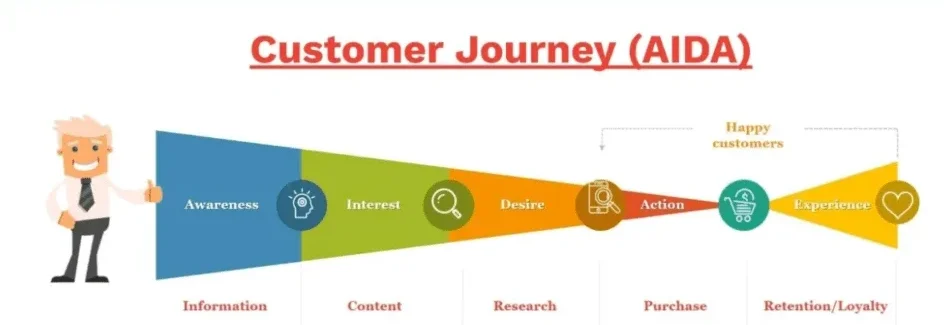
The marketing funnel works by guiding prospects step by step from the moment they first hear about your brand to the moment they make a purchase or take action. Think of it as a carefully designed journey where each stage helps nurture the prospect, gradually building trust and interest until they are ready to convert.
Flow of the Marketing Funnel
At the top of the marketing funnel, a large number of potential customers become aware of your brand through broad content, ads, or social media. As prospects show interest by engaging with your content—such as downloading an ebook or attending a webinar—they move further down the funnel.
In the desire stage, prospects begin to see the real value of your product or service, often through testimonials, free trials, or in-depth demonstrations. Finally, when they’re convinced, they take action by making a purchase, signing up, or requesting a demo.
For example, an online course platform might attract thousands of visitors with free blog content (awareness), engage hundreds through email campaigns (interest), convince dozens with free trial lessons (desire), and finally convert a smaller group into paying customers (action).
Optimization of the Marketing Funnel
To maximize the efficiency of the marketing funnel, businesses must regularly analyze performance data and adjust their strategies. Metrics such as click-through rates, email open rates, trial sign-ups, and conversion percentages help identify where prospects are dropping off.
According to Forrester, companies that actively optimize their marketing funnels improve conversion rates by up to 50%. For example, if data shows a high drop-off between the interest and desire stages, a business might improve product demonstration content or enhance follow-up emails to better address customer doubts.
By continuously testing and refining each stage of the marketing funnel, businesses ensure that more prospects successfully complete the journey from awareness to action, driving steady growth and customer satisfaction.
Read More: How to Advertise on Facebook: The Visual, Step-by-Step Guide
Common Mistakes to Avoid in the Marketing Funnel
A well-structured marketing funnel can significantly boost your business, but many companies make critical mistakes that prevent them from maximizing results. Here are some of the most common pitfalls to avoid:
Overlooking Mobile Users
With over 54% of web traffic coming from mobile devices, ignoring mobile optimization can cause major problems in your marketing funnel. If your website or checkout process isn’t mobile-friendly, prospects are likely to abandon the journey before completing an action.
For example, a slow-loading mobile checkout page or poorly designed forms can frustrate users, increasing bounce rates and reducing conversions. Always ensure your funnel is responsive and easy to navigate on any device.
Ignoring Analytics
One of the biggest mistakes in managing a marketing funnel is ignoring performance data. Without tracking key metrics like click-through rates, bounce rates, or conversion rates at each stage, you can’t know what’s working and what isn’t.
Data-driven decisions matter. According to Google, companies that use data-driven marketing are 6 times more likely to be profitable year-over-year. For instance, if analytics reveal that a webinar isn’t engaging enough at the interest stage, you can tweak the format, timing, or content to better capture audience attention.
Lack of Personalization
Treating all prospects the same way is a missed opportunity. Personalization helps tailor content and offers to different audience segments, making the marketing funnel far more effective.
For example, an online retailer can segment customers based on previous purchases or browsing behavior and send targeted emails featuring products they’re most likely interested in. Personalized strategies boost engagement by up to 80%, according to Epsilon research.
Read More: How to Find Guest Post Opportunities | “Write for us”
Tools to Enhance Your Marketing Funnel
Managing an effective marketing funnel becomes much easier and more efficient when using the right tools. These tools help you track interactions, automate communication, and analyze performance—so you can focus on guiding prospects toward becoming loyal customers.
CRM Systems
A Customer Relationship Management (CRM) system is essential for managing and analyzing every interaction you have with your prospects. Popular tools like Salesforce or HubSpot CRM help you keep track of where each customer is in the marketing funnel and what actions they’ve taken.
For example, a CRM can show that a lead attended a webinar (interest stage) but hasn’t yet downloaded a case study (desire stage). This data helps sales and marketing teams follow up with highly relevant offers, improving the chances of conversion.
Email Marketing Platforms
Email marketing platforms like Mailchimp, ActiveCampaign, or ConvertKit automate and personalize communication with prospects as they move through the marketing funnel.
Instead of manually sending every email, these platforms allow you to create drip campaigns—automated series of emails that deliver targeted content based on user behavior.
For instance, a lead who downloaded an ebook about social media marketing could automatically receive follow-up emails offering a free trial of your social scheduling tool, helping push them toward the desire and action stages.
Analytics Tools
Understanding how your marketing funnel performs is key to making smart adjustments. Tools like Google Analytics, Hotjar, or Mixpanel let you track metrics such as visitor behavior, conversion rates, and where people drop off.
For example, if analytics show that a large number of users exit your site during checkout, you can investigate further—maybe simplifying the process or offering additional payment options. According to Forrester, companies that regularly analyze funnel performance increase their conversion rate by up to 50%.
Read More: Why Digital Marketing is Better Than Traditional
Conclusion: Mastering the Marketing Funnel
Mastering the marketing funnel is essential for any business aiming to turn curious visitors into loyal customers. By understanding and optimizing each stage—Awareness, Interest, Desire, and Action—you create a well-structured path that gently guides prospects toward making a purchase.
A carefully managed marketing funnel doesn’t just help attract leads; it nurtures them by delivering the right message at the right time.
Whether it’s educating prospects with helpful blog articles, engaging them with personalized emails, or encouraging action with a simple checkout process, every step matters.
For example, businesses that personalize their content see up to 80% higher engagement rates, and those using data-driven strategies improve conversion by 50% or more.
Call to Action
Don’t wait to improve your results. Start implementing these strategies today and watch how an optimized marketing funnel can transform your marketing efforts, increase conversions, and build lasting customer relationships.
